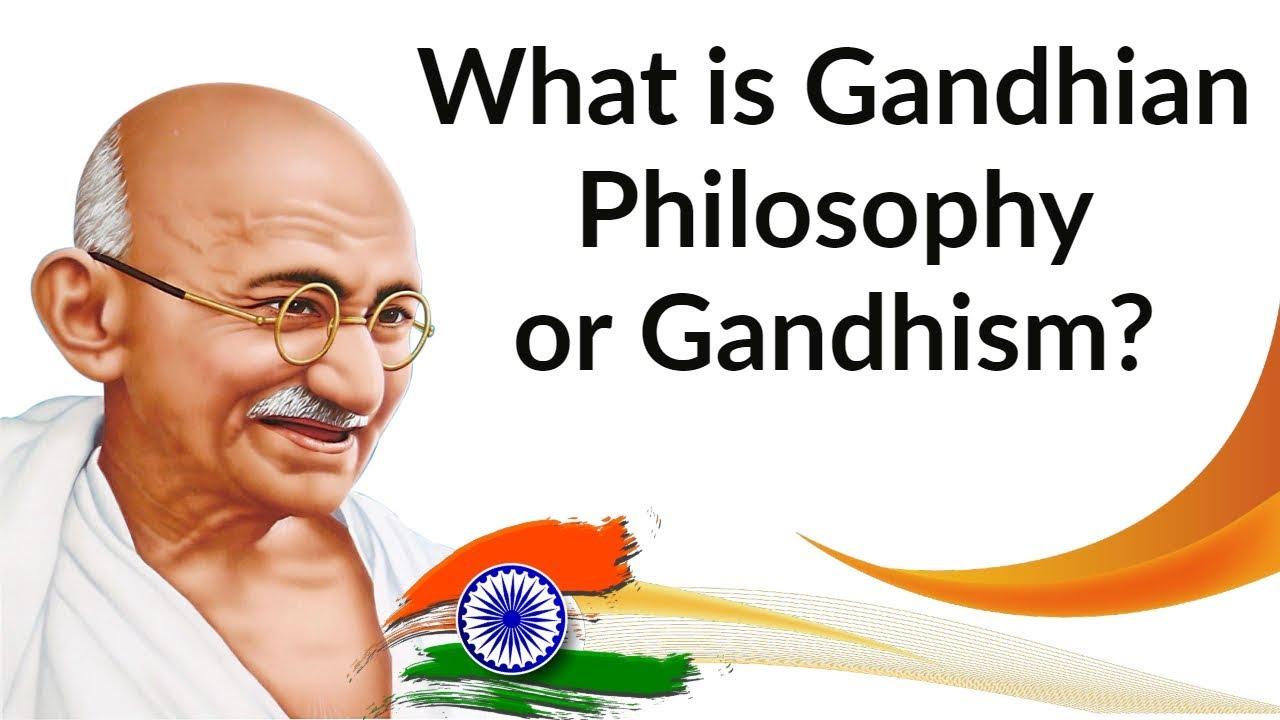Table of Contents
WHAT IS GANDHISM?
- Gandhism is a body of ideas that describes the inspiration, vision and the life work of Mohandas Gandhi. It is particularly associated with his contributions to the idea of nonviolent resistance, sometimes also called civil resistance.
- The two pillars of Gandhism are truth and non-violence.
- However, Gandhi did not approve of ‘Gandhism’. As he explained:
- “There is no such thing as “Gandhism” and I do not want to leave any sect after me. I do not claim to have originated any new principle or doctrine. I have simply tried in my own way to apply the eternal truths to our daily life and problems…The opinions I have formed and the conclusions I have arrived at are not final. I may change them tomorrow. I have nothing new to teach the world. Truth and non-violence are as old as the hills.”
SATYAGRAHA
- Satyagraha is formed by two Sanskrit words Satya (truth) and Agraha (holding firmly to).
- The pivotal and defining element of Gandhism is satya,a Sanskrit word for truth. It also refers to a virtue in Indian religions, referring to being truthful in one’s thought, speech and action.
- Gandhi said: “The Truth is far more powerful than any weapon of mass destruction.
AHIMSA
- At the age of 36, Gandhi adopted the vow of brahmacharya, or celibacy. He committed himself to the control of the senses, thoughts and actions. Celibacy was important to Gandhi for not only purifying himself of any lust and sexual urges.
- He held that total non-violence would rid a person of anger, obsession and destructive impulses. While his vegetarianism was also an extension of ahimsa.
ECONOMICS
- Gandhi espoused an economic theory of simple living and self-sufficiency/ import substitution, rather than generating exports like Japan and South Korea did.
- He envisioned a more agrarian India upon independence that would focus on meeting the material needs of its citizenry Gandhi also adopted the clothing style of most Indians in the early 20th century.
- His adoption of khadi, or homespun cloth, was intended to help eradicate the evils of poverty, social and economic discrimination.
- The clothing policy was designed to protest against British economic policies in India.
KHADI AND CHARKHA
- Gandhi espoused an economic theory of simple living and Millions of poor Indian workers were unemployed and entrenched in poverty, which Gandhi linked to the industrialisation of cotton processing in Britain.
- Gandhi promoted khadi as a direct boycott of the Lancashire cotton industry. He focused on persuading all members of the Indian National Congress to spend some time each day hand-spinning on the charkha (spinning wheel).
FASTING
- To Gandhi, fasting was an important method of exerting mental control over base desires. Gandhi was opposed to the partaking of meat, alcohol, stimulants, salt and most spices, and also eliminated different types of cooking from the food he ate.
- Fast Unto Death on three notable occasions:
- When he wanted to stop all revolutionary activities after the Chauri Chaura incident of 1922;
- When he feared that the 1932 Communal Award giving separate electorates to Untouchable Hindus would politically divide the Hindu people;
- And in 1947, when he wanted to stop the bloodshed between Hindus and Muslims in Bengal and Delhi.
RELIGION
- Gandhi described his religious beliefs as being rooted in Hinduism as well and, in particular, the Bhagavad Gita.
- “Hinduism as I know it satisfies my soul, fills my whole being. When doubts haunt me, when disappointments stare me in the face, and when I see not one ray of light on the horizon, I turn to the Bhagavad Gita, and find a verse to comfort me; and I immediately begin to smile in the midst of overwhelming sorrow. My life has been full of tragedies and if they have not left any visible and indelible effect on me, I owe it to the teachings of the Bhagavad Gita”.
- Despite his belief in Hinduism, Gandhi was also critical of many of the social practices of Hindus and sought to reform the religion.
RELIGION
- Later in his life when he was asked whether he was a Hindu, he replied: “Yes I am. I am also a Christian, a Muslim, a Buddhist and a Jew”.
AFTER GANDHI
- Gandhi was assassinated in 1948, but his teachings and philosophy would play a major role in India’s economic and social development and foreign relations for decades to come.
- Sarvodaya is a term meaning ‘universal uplift’ or ‘progress of all’. It was coined by Gandhi in 1908 as a title for his translation of John Ruskin’s Unto This Last. Later, nonviolence leader Vinoba Bhave used the term to refer to the struggle of postindependence.
- The Prime Minister of India, Jawaharlal Nehru, was often considered Gandhi’s successor, although he was not religious and often disagreed with Gandhi. He was, however, deeply influenced by Gandhi personally as well as politically.
INSPIRATION
- Gandhi’s deep commitment and disciplined belief in nonviolent civil disobedience as a way to oppose forms of oppression or injustice has inspired many subsequent political figures, including Martin Luther King Jr. of the United States, Julius Nyerere of Tanzania, Nelson Mandela and Steve Bikoof South Africa, Lech Wałęsa of Poland and Aung San Suu Kyi of Myanmar.
DEATH
- In 1960, he suffered a heart attack. He was treated by top doctors in India, including his friend Dr Bidhan Chandra Roy, the then Chief Minister of West Bengal.
- His health started deteriorating and he died on 7 March 1961 at the age of 74, from a cerebral stroke. At that time he was still in office as the Home Minister of India.

























 WhatsApp
WhatsApp